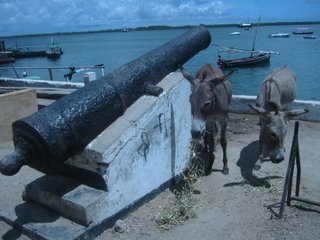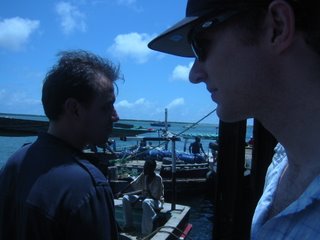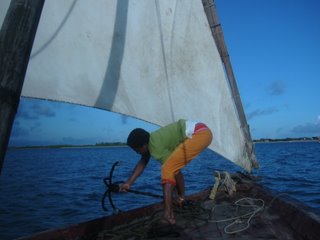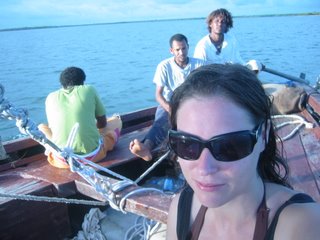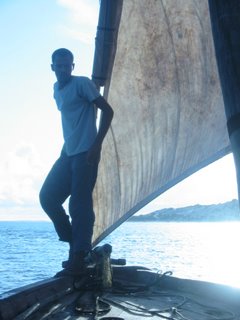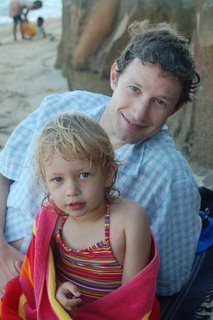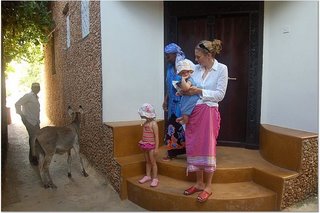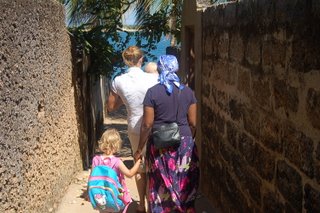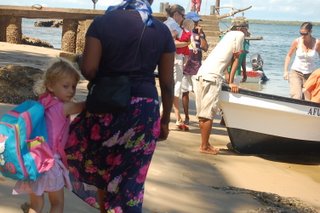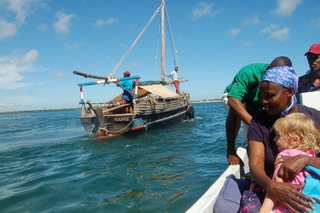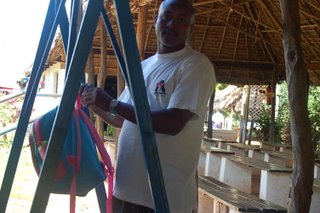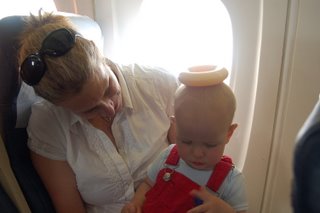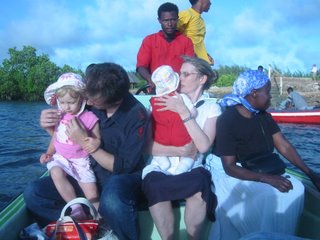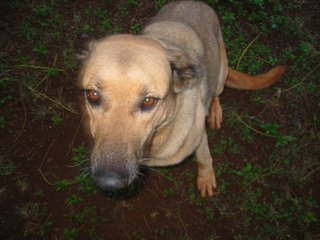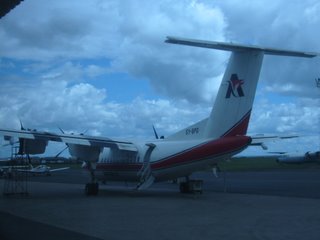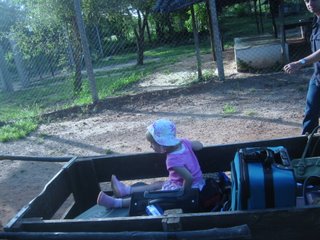As many of you know, Michelle and I are in
Nairobi, Kenya for three weeks – so while I can’t help but write through the lens of sustainability, below is a bit more self-indulgent, for the family type of post…
Originally, the main purpose of the trip was two-fold: to visit my sister’s family and be “outside observers” at the Conference of the Parties (COP). COP is the annual climate change negotiations that have been taking place since the earth summit in 1992. In 1997, the COP was in Kyoto, and produced the now famous Protocol. Unfortunately, our connection to get outside observer status fell through at the last minute, leaving us in the happy position of being able to focus on the first purpose of visiting family.
The internet access has been patchy here – ironically because the power consumption from the COP has been causing blackouts – so I’m planning on trying to keep up with short daily posts, which I can put online all at once later.
Getting there
Early Saturday morning we boarded the train to Copenhagen, and after a long, but smooth day of travel we arrived in Zurich for an overnight layover. Thanks to Swiss efficiency, we hopped a train downstairs in the airport (why don’t all US cities have this??) and were in the central station in 15 minutes. Michelle’s friend Eric hooked us up with the royal treatment, walking us 5 minutes to his styled-up apartment in the old-town part of the city – every European city has one of these, and they’re all awesome, this one was no exception. Right into drinks & appetizers, and after a few more friends came over we headed out to a great Spanish restaurant.
The crew was fun, and very interesting to talk to as many of them worked for the largest (physical) commodities trading firm in the world – lots of implications regarding SPs # 1 & 3 moving around most of the world’s coal, oil, grains, etc – and so a lot of interest in strategic sustainability, and how a company like that could lead the way, as opposed to hindering progress. As they’re essentially a middle man, it’s easy to see how they could still do great business in biofuels, recycled materials, sustainably-managed renewable raw materials, etc.
All in all it made for a great night, a new city, and much appreciated hospitality. We were up early Sunday morning back on the train, and flying to Nairobi. It was a long but smooth ride with great views of Italy, Greece, & Egypt on the way. My sister’s family has a driver they hire regularly who was there to pick us up at the airport – which was incredibly smooth through customs, etc.
His name is Bradley, and he gave us the run-down on Nairobi as we sped through it in the dark. He is Luo, a tribe from the area around Lake Victoria, but grew up in Nairobi, went to school here and studied art, but because it’s tough to be an artist (even here in Kenya!) he’s been a driver for years – first driving a matatu, which is what they call the minibuses here, which are basically hell-on-wheels minivans that drive regular bus routes stopping more or less at random. Now he’s managed to get in the taxi businesses, and does hire-by-day gigs. He’s a great guy, knows everyone in the city and is hooking us up with many insights.
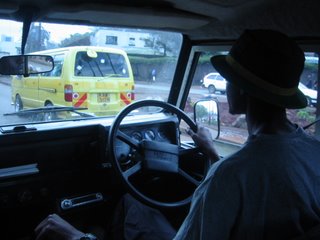

So we arrived at the house around 8 through an armed guard gate, into a neighborhood, through another gate into the drive way, where two night guards and Simba (they didn’t pick the name, she was adopted), the watchdog greeted us. The kids were asleep, unfortunately, but Em had a full-spread dinner ready to go which was great, and so good of course to have some time to catch up after over a year. The house is beautiful – not too big, but not too small. Em’s office became our bedroom, complete with a big bouquet of orange roses (and apologies from Em that they are probably partly responsible for the drying of Lake Naivasha).

Mads was in Rwanda on business (for UNICEF) so we just had a chill night and went to sleep very excited for the African adventure to begin.
DAY 1 - Kitengela Glass
Rain. But still so beautiful out the window, the small house has a huge yard, framing a huge, full-in-bloom Jacaranda tree, which has scattered a purple carpet of flowers everywhere. A shy girl helped wake us up, and we got to know each other over a bowl of fresh mangos before taking her to school.

After the drop-off at a very cute little-kid school with cut-outs and collages hanging everywhere, a playground surrounded by bamboo, and a healthy mix of little Africans, Indians and Europeans running around – we went for a run ourselves to explore the neighborhood. We quickly remembered we were at 2500 meters, and didn’t explore a whole lot of the neighborhood. We got back to the house, greeted by the day guard, Evans, and of course the always-on-duty, Simba, took showers and got settled in, before grabbing lunch and hitting the road with Bradley.
Our first destination was the Kitengela Glass http://www.kitengela.com forge. It is only about 30 kms from Nairobi, but the drive took about an hour in the Land Rover, which we were happy to have given the condition of the roads.
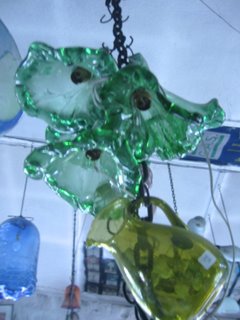
This place is a total trip. After pulling off the paved road and winding our way through an area lined with tin-shack shops, and through a valley, up a big hill, passing Maasai in traditional dress (the long colorful robes, bald heads, beaded jewelry) to a mesa – clear grassland with a view back over the city’s skyline (surprisingly modest, less high-rises than I remember from my time in Harare, Zimbabwe) – and no real road. Bradley somehow navigated us to the glass shop following clues of funky 70s-esque art pieces by the side of the road.

We got a brief tour of the place, through the workshops where the artists were doing their thing (paying us little mind) – some beautiful work. The last room was connected to the forge and we stood and watched them toss the broken, recycled glass in the furnaces (oil run) and crank out a couple large vases and a couple glasses with ease. The forge was a dark, tall dome with stained glass windows about 20 feet up ventilating and letting in light. The blowers moved with a natural grace around one another, they seemed to not even look at each other, but manage to avoid hitting others as they swung the molten glass around and were right there for each other, just in time when more hands were needed to cut this or pinch that – it was mesmerizing.

We bought a few pieces and the long bumpy ride home seemed shorter than on the way out.
DAY 2 – Giraffe park & lunch, Karen Blixen style
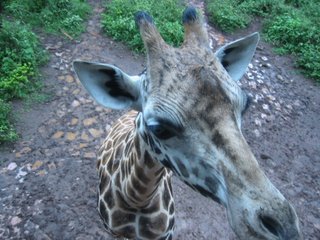
We went to the Giraffe park in the town of Karen (named after Karen Blixen, the Danish woman the movie Out of Africa was based on). The park is like a zoo, but a really nice zoo where the giraffes have a huge savannah to roam around in. The main attraction is a raised circular building where you can feed the giraffe by hand. Of course it feels contrived (it is) but you still get a thrill of being so close and in contact with these huge graceful beasts.

The real attraction though was a different kind of beast – the Aussie- & Americano-tourist.
We were joined by a busload of load tourists, who distracted much of our attention from the ‘wildlife’.
Liv was helpful in showing us how it was done (this is part of her regular routine).
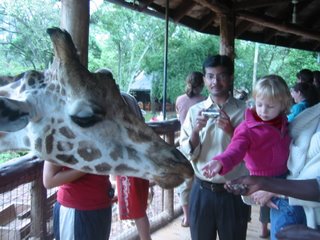


Next we went for a luxurious lunch at the Talisman restaurant – a mellow indoor-outdoor ex-pat hang out, where we sat by the fire, watched the Nairobi drizzle and read books with Liv. Lunch lasted most of the afternoon, and after some errands and work, it was dinner and bed.

 The tall buildings exemplified “green design” by providing shade a cool breeze throughout the streets. They were made of coral reef, which absorbed and held the water after rains, keeping the walls cool to the touch. This practice has been banned to protect the reefs, which will probably die from global warming anyway – aided by the cement production they now use for buildings ;)
The tall buildings exemplified “green design” by providing shade a cool breeze throughout the streets. They were made of coral reef, which absorbed and held the water after rains, keeping the walls cool to the touch. This practice has been banned to protect the reefs, which will probably die from global warming anyway – aided by the cement production they now use for buildings ;)